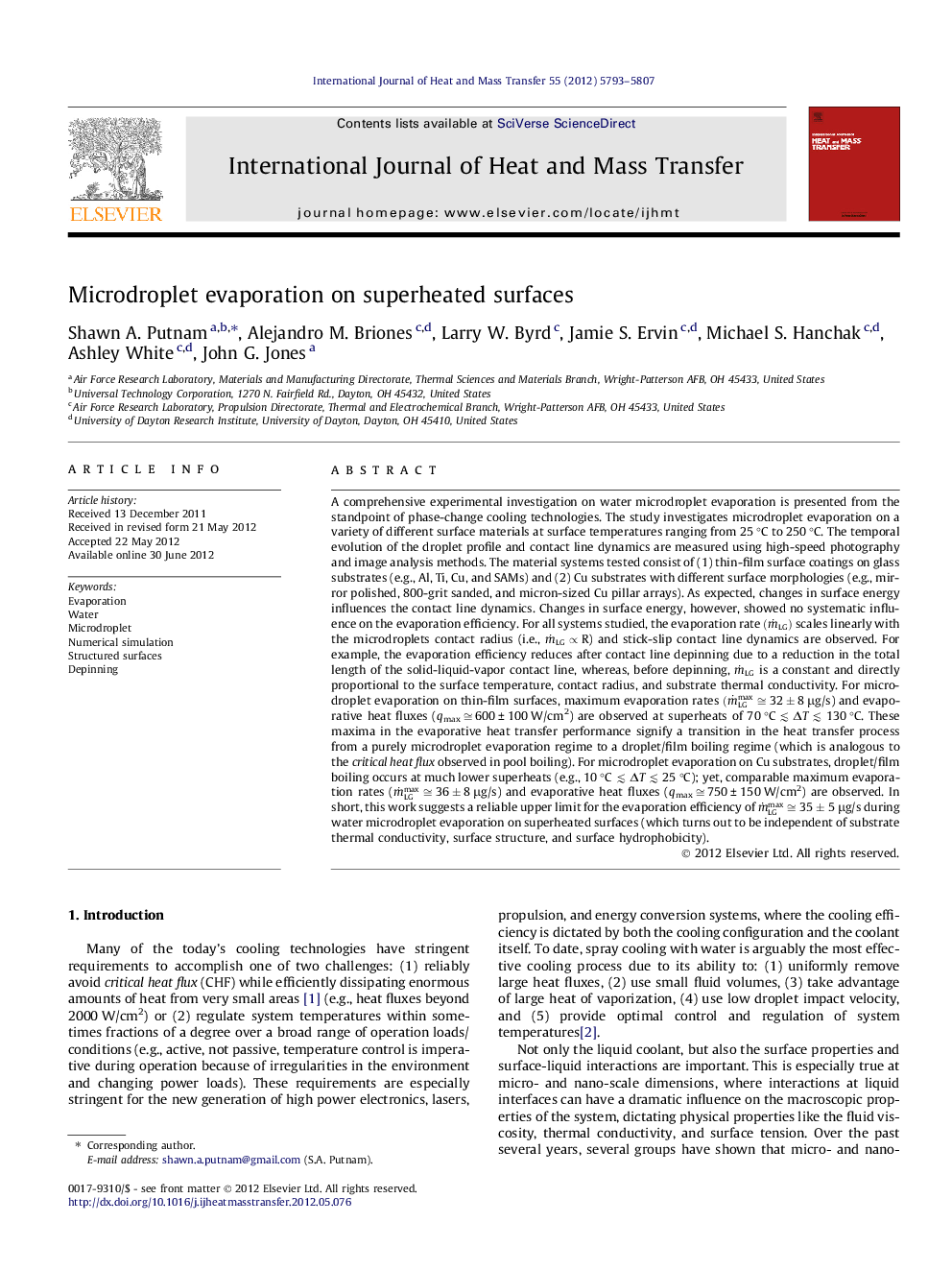| Article ID | Journal | Published Year | Pages | File Type |
|---|---|---|---|---|
| 659141 | International Journal of Heat and Mass Transfer | 2012 | 15 Pages |
A comprehensive experimental investigation on water microdroplet evaporation is presented from the standpoint of phase-change cooling technologies. The study investigates microdroplet evaporation on a variety of different surface materials at surface temperatures ranging from 25 °C to 250 °C. The temporal evolution of the droplet profile and contact line dynamics are measured using high-speed photography and image analysis methods. The material systems tested consist of (1) thin-film surface coatings on glass substrates (e.g., Al, Ti, Cu, and SAMs) and (2) Cu substrates with different surface morphologies (e.g., mirror polished, 800-grit sanded, and micron-sized Cu pillar arrays). As expected, changes in surface energy influences the contact line dynamics. Changes in surface energy, however, showed no systematic influence on the evaporation efficiency. For all systems studied, the evaporation rate (m˙LG) scales linearly with the microdroplets contact radius (i.e., m˙LG∝R) and stick-slip contact line dynamics are observed. For example, the evaporation efficiency reduces after contact line depinning due to a reduction in the total length of the solid-liquid-vapor contact line, whereas, before depinning, m˙LG is a constant and directly proportional to the surface temperature, contact radius, and substrate thermal conductivity. For microdroplet evaporation on thin-film surfaces, maximum evaporation rates (m˙LGmax≅32±8 μg/s) and evaporative heat fluxes (qmax ≅ 600 ± 100 W/cm2) are observed at superheats of 70 °C ≲ ΔT ≲ 130 °C. These maxima in the evaporative heat transfer performance signify a transition in the heat transfer process from a purely microdroplet evaporation regime to a droplet/film boiling regime (which is analogous to the critical heat flux observed in pool boiling). For microdroplet evaporation on Cu substrates, droplet/film boiling occurs at much lower superheats (e.g., 10 °C ≲ ΔT ≲ 25 °C); yet, comparable maximum evaporation rates (m˙LGmax≅36±8 μg/s) and evaporative heat fluxes (qmax ≅ 750 ± 150 W/cm2) are observed. In short, this work suggests a reliable upper limit for the evaporation efficiency of m˙LGmax≅35±5 μg/s during water microdroplet evaporation on superheated surfaces (which turns out to be independent of substrate thermal conductivity, surface structure, and surface hydrophobicity).
Graphical abstractFigure optionsDownload full-size imageDownload as PowerPoint slide
